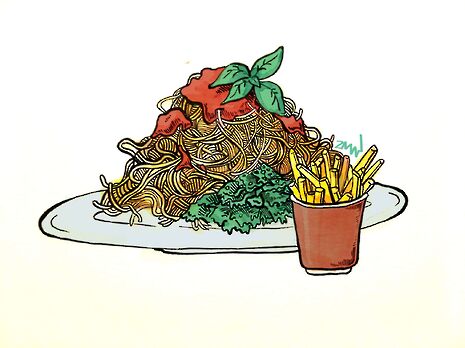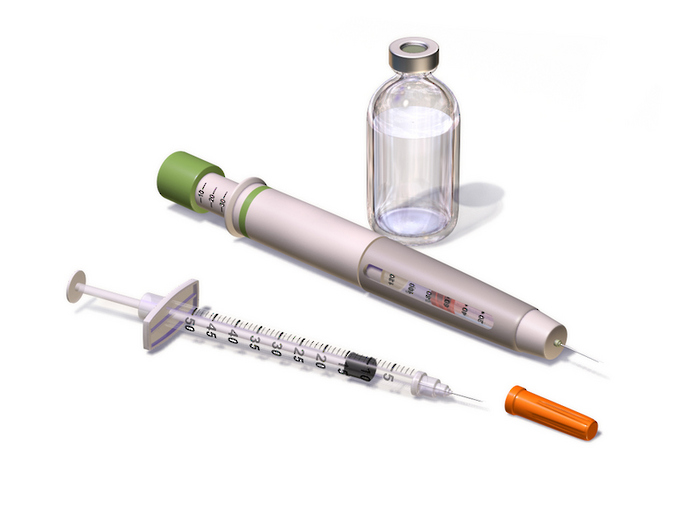Diabetes, my body and me
Fifteen years after her diagnosis, Cathy Fisher reflects on her relationship with her diabetes

The evening of my matriculation at Selwyn, I was anxious.
This is not in the way you might think. Of course there were the standard insecurities of anticipation, of things that begin anew. Perhaps you had these too. I wondered, what would the years ahead hold? But my anxious mind wrestled with a question that was primal, that came at me like a bullet. There would be a post-ceremony dinner: what would we eat?
Having diabetes creates ample opportunity for food-related anxiety. On the evening of my matriculation, I worried whether I’d be able to eat what would feature on the menu. As is the nature of anxiety, from this single worry grew others. Would I administer insulin in the right dose and timing? In the absence of diabetic-friendly food, would I eat at all? Would I pretend to? Would people notice? What would they assume? Questions have an exhausting ability to reproduce.
In some days coping feels like a clumsy struggle, and on others, a graceful dance
It turns out I’d had nothing to worry about. The team at Selwyn had prepared all the accommodations I’d needed. What I’d so feared never manifested.
While I am one of the small percentage of people with type 1 diabetes, I tell this story as an example we might perhaps all relate to. In our body we are fundamentally alone, and in our mind we harbor preoccupation that can be invisible. On some days coping feels like a clumsy struggle, and on others, a graceful dance.
For me, the struggle is inextricable from meals. Type 1 diabetes is an autoimmune condition in which the body sabotages its ability to produce insulin, a life-sustaining hormone that is metabolically crucial, particularly when we eat. People with type 1 rely on synthetic insulin to do the work the pancreas is no longer able to. This requires all sorts of tedious calculation, thought and planning around what goes in the body. Eating can become frightening work.
What were the implications of incurability? What is the nature of an illness that’s chronic?
How to reconcile this? Food is life-giving in the literal sense. It is also life-sustaining in a broader way. We gather around it in expressions of our humanity. We design physical spaces for it, with dining halls, restaurants and kitchen tables being fundamental structures in support communion of food, ideas and people. Meals bring us together in honor of a special event, perhaps a birthday. Through food we express hospitality, inviting people into the intimacy of our living space. Perhaps we return to our childhood homes, to tables that have been set and cleared for decades, that have silently held space for association. Food is infinite in its interpretational possibilities: it can be love, altruism, adventure, control, rebellion, identity, values. Eating is a societally-dignified activity through which, whether consciously or not, we create meaning. This is tangible now, as the year’s end approaches us with its season of holiday parties, pub quizzes and dinners.
I find myself reflecting on my diagnosis, which took place exactly fifteen years ago this week. I was a first-semester freshman at Duke University, and on a rainy weekday morning collapsed in the dining hall over a bowl of cereal. I awoke from a diabetic coma with a new diagnosis and a new life, one that had taken a scalpel to some of its innocent parts. A sandwich was no longer a sandwich.
Amidst the brightness of that holiday season, I had questions with a dark edge. What were the implications of incurability? What is the nature of an illness that’s chronic? What did it mean to have a body that attacked what was vital? Would I ever be loved? Could I love myself? Did I even want to? Underlying them was a small voice: why me?
Time is a potent softener, and there is solace in what goes unanswered
Fifteen years after that first November, I am again a student, now in the first term of a graduate program at Cambridge. My mind returns to where I started. I think about my freshman-year self and its questions, to which I can see there was never an answer. I suspect there can be none for the questions that most pain us.
But time is a potent softener, and there is solace in what goes unanswered. Where there is no explanation, there is a vacuum to fill with new thought and dimension, or perhaps with gentler, humbler inquiries about a lived life. The unanswered question contains multitudes, holding awe and tenderness, vulnerability and fear at once.
My questions have been rewritten, converging into a singular one: why not me?
I am stunned by these fifteen years, which have somehow returned me to a place of beginning anew.
I walk down Trinity Street and see the questions of my younger self reflected in students’ faces as they bicycle to class or pour over books in the library. I don’t pretend to know their stories or the burdens they carry, the questions that gnaw at them, or will. But I do know my story is not unique. We all carry loads that are invisible. I marvel at the people who pass, at the beauty of their place and time in the universe, one that is so brilliant it almost explodes. In our bodies we may be alone, but in the human experience we are rich in companionship.
This week, Americans celebrate Thanksgiving in gatherings of food, family, and gratitude. This being my diagnosis week, in my mind I return to the emergency room and the day when a sandwich stopped being a sandwich. My returning sense of loss can feel incompatible with a festive exercise in giving thanks. But I no longer seek to reconcile the asynchronous. I want the palpable life texture of the unanswered question. I want to hold the dualities, at once the bitter and the sweet. I am grateful that life can contain both.
 Comment / Plastic pubs: the problem with Cambridge alehouses 5 January 2026
Comment / Plastic pubs: the problem with Cambridge alehouses 5 January 2026 News / Cambridge businesses concerned infrastructure delays will hurt growth5 January 2026
News / Cambridge businesses concerned infrastructure delays will hurt growth5 January 2026 News / Cambridge academics stand out in King’s 2026 Honours List2 January 2026
News / Cambridge academics stand out in King’s 2026 Honours List2 January 2026 News / AstraZeneca sues for £32 million over faulty construction at Cambridge Campus31 December 2025
News / AstraZeneca sues for £32 million over faulty construction at Cambridge Campus31 December 2025 Interviews / You don’t need to peak at Cambridge, says Robin Harding31 December 2025
Interviews / You don’t need to peak at Cambridge, says Robin Harding31 December 2025










